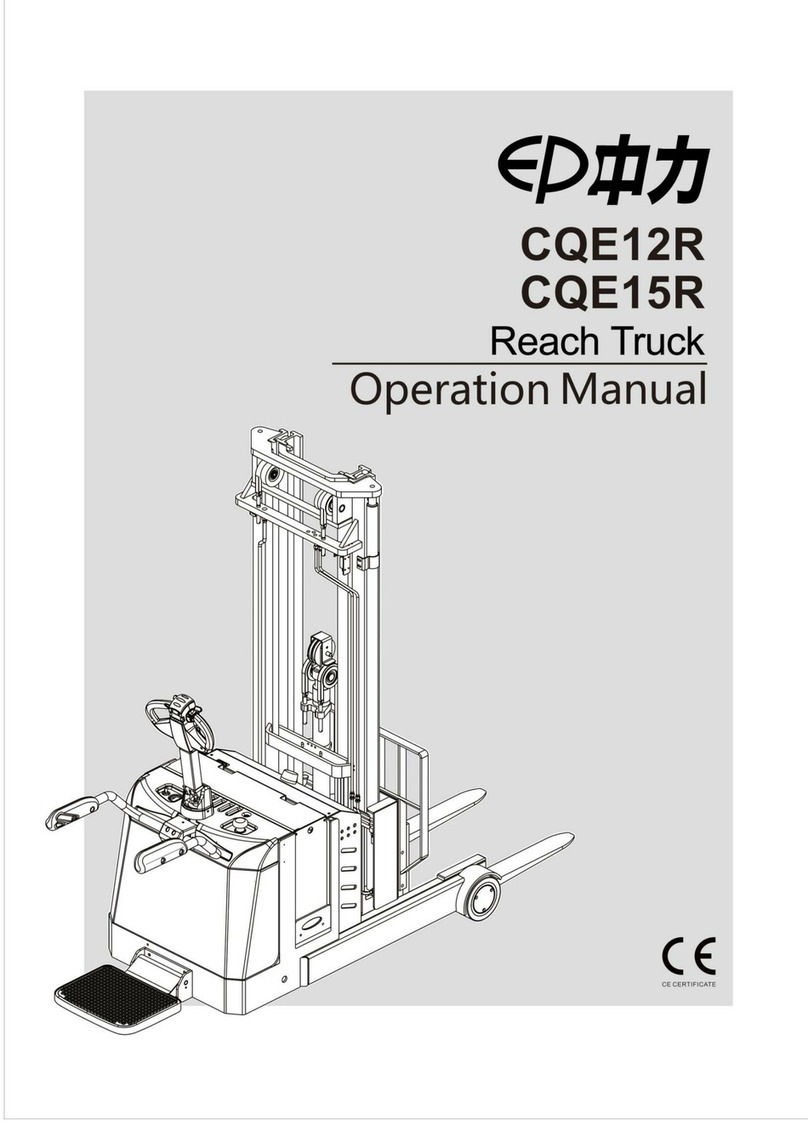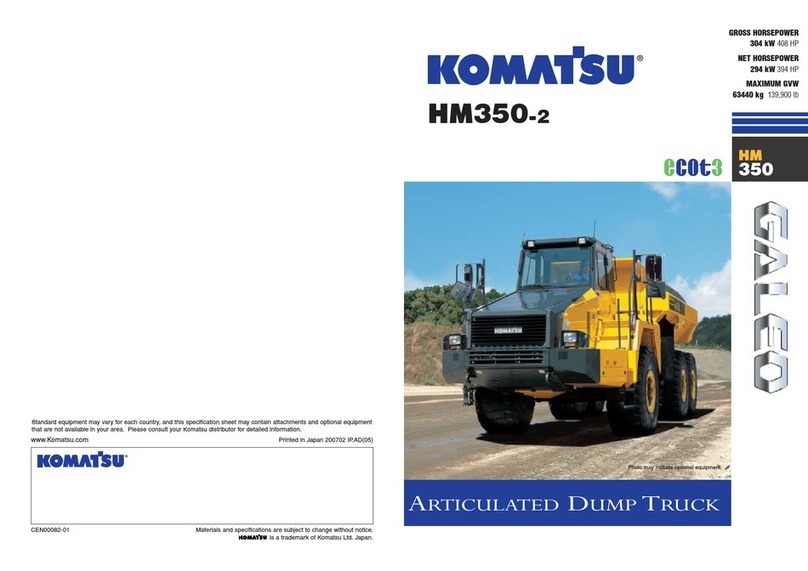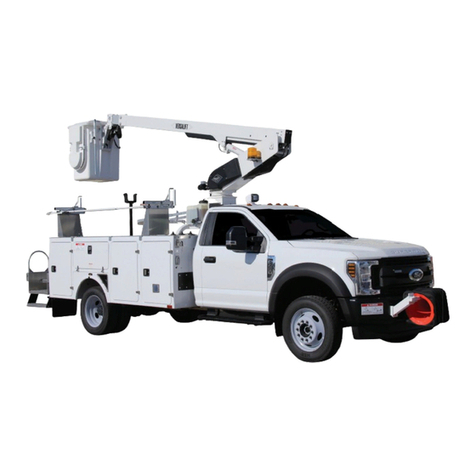EP Equipment EPT16-ET User manual


I
Foreword
Thanks for your purchasing our Pallet truck.
This manual is about how to use, operation and maintenance .Please operator and
whom in charge of the truck must read the manual carefully before operate the truck.
We have the right to improve the truck, maybe there are some difference between
your product and the description in this manual.
If you have any questions please keep in touch with the sales department or let the
dealer know.
Notes:
1. This manual is used for operation and maintenance , the detail parameter
s, size and specifications in context is only for reference , the real parameters
will depend on sale files.
2. Manual pictures for reference only, the real car shall prevail, and shall not
affect the manual use.
EP EQUIPMENT CO.,LTD
Address: XIAQUAN,DIPU,ANJI,ZHEJIANG,CHINA
Tel: 86-571-28031990
Fax: 86-571-28035616
Net: www.ep-ep.com
Email: Service@ep-ep.com
ALL RIGHT RESERVED COPYRIGHT
2017.03 1st EDITION

II
WARNING!
TO PREVENT SETIOUS RISK OF INJURY TO
YOUORSELF AND OTHERS OBSERVE THE
FOLLOWING SAFETY INSTRUCTIONS.
These truck may become hazardous if adequate maintenance is neglected. Therefore,
adequate maintenance facilities, trained personnel and procedures should be
provided.
Maintenance and inspection shall be performed in conformance with the following
practices:
1. A scheduled planned maintenance,lubrication and inspection system should be
followed.
2. Only qualified and authorized personnel shall be permitted to maintain, repair,
adjust, and inspect truck.
3. Before leaving the truck:
– Do not park the truck on an incline.
– Fully lower the load forks.
– Set the key switch to the "OFF" position and remove the key.
4. Before starting to operate truck:
– Be in operating position
– Place directional control in neutral
– Before operating truck, check functions of lift systems, directional control,speed
control,steering, warning devices and brakes.
5. Avoid fire hazards and have fire protection equipment present. Do not use open
flame to check lever, or for leakage of electrolyte and fluids or oil. Do not use open
pans of fuel or flammable cleaning fluids for cleaning parts.
6. Brakes,steering mechanisms, control mechanisms,guards and safety devices shall
be inspected regularly and maintained in legible condition.
7. Capacity, operation and maintenance instruction plates or decals shall be
maintained in legible condition.
8. All parts of lift mechanisms shall be inspected to maintain them in safe operating
condition.

III
9. All hydraulic systems shall be regularly inspected and maintained in conformance
with good practice. Cylinders, valves and other similar parts shall be checked to
assure that "drift" has not developed to the extent that it would create a hazard.
10. Truck shall be kept in a clean condition to minimize fire hazards facilitate
detection of loose or detective parts.
11. Modifications and additions which affect capacity and safe truck operation shall
not be performed by the customer or user without manufacturers prior written
approval. Capacity, operation and maintenance plates or decals shall be changed
accordingly.

IV
Catalog
Correct use and application............................................................................................................ 1
1. Truck Description......................................................................................................................... 2
1.1 Application...........................................................................................................................2
1.2 Assemblies.......................................................................................................................... 3
1.2.1 Control Handle................................................................................................................ 4
1.2.2 Key switch........................................................................................................................4
1.2.3 Battery discharge indicator........................................................................................... 5
1.3 Identification points and data plates............................................................................... 5
1.3.1 Truck data plate.............................................................................................................. 7
1.4 Standard Version Specifications......................................................................................8
1.4.1 Performance data for standard trucks........................................................................ 8
1.4.2 Dimensions...................................................................................................................... 9
2.Transport and Commissioning.................................................................................................. 11
2.1Using the Truck for the First Time................................................................................. 11
2.2During brake-in................................................................................................................. 11
3.Operation...................................................................................................................................... 12
3.1Safety Regulations for the Operation of Pallet Trucks............................................... 12
3.2 Operate and run the truck.............................................................................................. 13
3.2.1 Preparing........................................................................................................................13
3.2.2 Travel ,Steering,Braking.............................................................................................. 13
3.2.3Lifting, transporting and depositing loads..................................................................14
3.2.4Parking the truck securely............................................................................................15
4.Battery Maintenance & Charging............................................................................................. 16
4.1 Safety regulations for handling acid batteries.............................................................16
4.2Charging the battery......................................................................................................... 16
4.3 Battery removal and installation.................................................................................... 17
4.4Battery maintenance........................................................................................................ 18
4.5 Battery Disposal............................................................................................................... 19
5.Pallet Truck Maintenance.......................................................................................................... 20
5.1Operational safety and environmental protection........................................................20
5.2Maintenance Safety Regulations................................................................................... 20
5.3Servicing and inspection..................................................................................................21
5.3.1Maintenance Checklist..................................................................................................22
5.3.2 Lubrication Schedule................................................................................................... 23
5.3.3 Maintenance Instructions............................................................................................ 24
5.4 Decommissioning the industrial truck...........................................................................26

V
5.4.1 Prior to decommissioning............................................................................................26
5.4.2 Restoring the truck to operation after decommissioning....................................... 26
5.5Safety checks to be performed at regular intervals and
following any unusual incidents......................................................................... 27
5.6Final de-commissioning, disposal.................................................................................. 27
6.Troubleshooting........................................................................................................................... 28

1
Correct use and application
The truck described in the operation manual is an industrial truck designed for lifting
and transporting load units.
It must be used, operated and serviced in accordance with the present instructions.
Any other type of use is beyond the scope of application and can result in damage to
personnel, the truck or property. In particular, avoid overloading the truck with loads
which are too heavy or placed on one side. The data plate attached to the truck or the
load diagram are binding for the maximum load capacity. The industrial truck must not
be used in fire or explosion endangered areas, or areas threatened by corrosion or
excessive dust.
Proprietor responsibilities
For the purposes of the operation manual the “proprietor” is defined as any natural or
legal person who either uses the industrial truck himself, or on whose behalf it is used.
In special cases (e.g. leasing or renting) the proprietor is considered the person who,
in accordance with existing contractual agreements between the owner and user of
the industrial truck, is charged with operational duties.
The proprietor must ensure that the truck is used only for the purpose it is intended for
and that danger to life and limb of the user and third parties are excluded.
Furthermore, accident prevention regulations, safety regulations and operating,
servicing and repair guidelines must be followed. The proprietor must ensure that all
truck users have read and understood this operator manual.
Failure to comply with the operation manual shall invalidate the warranty. The same
applies if improper work is carried out on the truck by the customer or third parties
without the permission of the manufacturer’s customer service department.
Attaching accessories
The mounting or installation of additional equipment which affects or supplements the
performance of the industrial truck requires the written permission of the manufacturer.
In some cases, local authority approval shall be required.
Approval of the local authorities however does not constitute the manufacturer’s
Approval.

2
1. Truck Description
1.1 Application
The truck is designed to transport goods on level surfaces. It can lift open bottom or
diagonal board pallets as well as roll cages beyond the area of the load wheels.
Suitable environment temperature is 5°C to 40 °C.
If a long time in less than 5 ° C environment, cold storage or in the extreme conditions
of temperature and humidity changes in the use of Pallet, you must install additional
special equipment, and obtain permission from the manufacturer.

3
1.2 Assemblies
Item
Component
Item
Component
1
Control tiller
6
Forks
2
Control handle
7
Battery
3
PU Wheel
8
Plug
4
Cylinder
9
Emergency stop switch
5
Driving wheel
10
Pump and motor assembly

4
1.2.1 Control Handle
1.2.2 Key switch
Switches control current on and off.
Truck power supply is break off when the key turn "OFF".
Truck power supply is turn on when the key turn "ON".
Removing the key prevents the truck from being switched
on by unauthorised personnel.
Item
Control / Display
Function
11
Key switch
Switches control current on and off.
12
Power module
Display battery residual capacity
13
“Lower” button
Lowers load forks.
14
“Lift” button
Raises load forks.
15
Travel switch
Controls the driving speed and direction
16
Horn button
Triggers a warning signal.
17
Collision safety switch
Safety function which, when activated, forces the
truck to reverse until the switch restored to neutral.

5
1.2.3 Battery discharge indicator
The LEDs (1) represent battery residual
capacity, The LCD (2) displays the operating
hours. The LED (3) is a fault alarm lamp.
Battery Discharge Indicator(1)
When the truck has been released via the key
switch, the battery charge status is displayed.
The colours of the LEDs (1) represent the
following conditions:
Component
LED colour
value
Standard battery residual capacity
Green
70-100%
Orange
30-60%
Flashing Red
0-20%
Battery Discharge for 70%, A flashing red show on storage battery charge warning.
Battery Discharge for 80%, Two flashing reds show on battery charge used up
warning, Lifting is now inhibited. The battery must be charged.
Operating hours display(2)
Display range between 0.0 and 99,999.0 hours. Travel and lifting are logged. This is a
backlit display.
Power up test
On power up the display shows:
• the operating hours
• the charge status
The battery discharge indicator has a memory function, it can remember the battery
power after the power turn off, and next time the power has be turned on it will show
the power in it memory . If you want reset battery discharge indicator, please turn on
the key after properly charging .
Low Voltage Protection
This vehicle has a low-voltage protection function.
When the battery voltage is less than 20%, the vehicle will appear that the driving
speed is slow ,but the fork can be lifted.And now the battery needs to be charged.

6
1.3 Identification points and data plates
Item
Description
1
Direction Decal On Control Handle
2
“No passengers”Decal
3
“Emergency stop button”Decal
4
Strap point for crane lifting
5
“Never put your hands in inner”.warning
6
Truck data plate

7
1.3.1 Truck data plate
Item
Description
Item
Description
1
Vehicle name
8
Max capacity
2
Model
9
Alt capacity
3
Series No.
10
Year of build
4
Load center
11
Weight with battery
5
Load capacity
12
Weight without battery
6
Voltage
13
Max battery weight
7
Drive output
14
Min battery weight
For queries regarding the truck or ordering spare parts please quote the truck serial
number(3).
MODEL NUMBER EXAMPLE
EPT 16/20 - ET
Electric pallet truck
Capacity: 16=1600kg
20=2000kg
Series label

8
1.4 Standard Version Specifications
Technical specification details in accordance with JB/T3773.1-84.
Technical modifications and additions reserved.
1.4.1 Performance data for standard trucks
Item
Description
EPT16-ET
EPT20-ET
Unit
Q
Load capacity
1600
2000
kg
C
Load center
600
600
mm
Travel speed
laden
4
4
km/h
unladen
5.5
5.5
km/h
Lifting speed
laden
0.024
0.024
m/s
unladen
0.038
0.038
m/s
Lowering speed
laden
0.034
0.034
m/s
unladen
0.025
0.025
m/s
Maximum
gradeability,
S25 min.
laden
10
8
%
unladen
20
16
%
Service brake
Electromagnetic
Electromagnetic
Service weight
Incl. battery
215
220
kg
Axle loading,
laden
operator/load side
625/1190
740/1480
kg
Axle loading,
unladen
operator/load side
180/35
180/40
kg
Motor
Drive
0.75
0.75
kW
Lift
0.84
0.84
kW
Tyre type, operator/load side
Rubber/ PU
PU/ PU
Tyre size, operator side
Ф255×74
Ф250×74
Tyre size, load side
Φ80×40
Φ78×60
Battery
type
Maintenance
free battery
Maintenance
free battery
voltage/ rated
capacity (5h)
12×4/ 30
12×4/ 30
V/Ah
weight
9.5×4
9.5×4
kg
Sound level at operator's ear
74
74
dB(A)

9
1.4.2 Dimensions
Item
Description
EPT16-ET
EPT20-ET
Unit
X
Load distance
873/976
873/976
mm
Y
Wheelbase
1247/1350
1247/1350
mm
h3
Lift height
140
140
mm
b11
Tread
load side
410(535)
410(535)
mm
h13
Fork height
lowered
80
80
mm
h14
Height of tiller
arm in operating
position
min
750
750
mm
max
1170
1170
mm
L1
Overall length
1685
1685
mm
L2
Length to face of forks
535
535
mm
b1
Overall width
560(685)
560(685)
mm
s
Fork dimensions
Thickness
50
50
mm
e
Width
150
150
mm
L
Length
1150
1150
mm
b5
Fork spread
560(685)
560(685)
mm
m2
Ground clearance
30
30
mm
Wa
Outer turning radius
1465
1465
mm
Ast
Aisle width1)
1000×1200 pallet
crossways
1792
1792
mm
800×1200 pallet
lengthways
1992
1992
mm
1)Including safety distance a = 200 mm

10
EPT20-ET / EPT16-ET

11
2.Transport and Commissioning
2.1 Using the Truck for the First Time
Only operate the truck with battery current. Rectified AC current will damage the
electronic components. Cable connections to the battery (tow leads) must be less
than 6 m .
Preparing the truck for operation after delivery or transport
Procedure
•Check the equipment is complete.
•Check the hydraulic oil level.
•Install the battery if necessary (where required), (see "4.3 Battery removal and
installation" ) do not damage battery cable.
•Charge the battery, (see "4.2 Charging the battery" ).
When the truck is parked the surface of the tyres will flatten. The flattening will
disappear after a short period of operation.
2.2 During brake-in
We recommended operating the machine under light load conditions for the first stage
of operation to get the most from it. Especially the requirements given below should
be observed while the machine is in a stage of 100 hours of operation.
•Must prevent the new battery from over discharging when early used. Please
charging when remain power less than 20%.
•Perform specified preventive maintenance services carefully and completely.
•Avoid sudden stop, starts or turns.
•Oil changes and lubrication are recommended to do earlier than specified.
•Limited load is 70~80% of the rated load.

12
3.Operation
3.1Safety Regulations for the Operation of Pallet Trucks
Driver authorisation: The Pallet truck may only be used by suitably trained
personnel, who have demonstrated to the proprietor or his representative that they
can drive and handle loads and have been authorised to operate the truck by the
proprietor or his representative.
Driver’s rights, obligations and responsibilities: The driver must be informed of
his duties and responsibilities and be instructed in the operation of the truck and
shall be familiar with the operator manual . The driver shall be afforded all due rights .
Safety shoes must be worn with pedestrian operated trucks.
Unauthorised Use of Truck: The driver is responsible for the truck during the time it
is in use. He shall prevent unauthorised persons from driving or operating the truck.
It is forbidden to carry passengers or lift personnel.
Damage and Faults: The supervisor must be immediately informed of any damage or
faults to the Pallet truck. Trucks not safe for operation (e.g. wheel or brake problems)
must not be used until they have been rectified.
Repairs: The driver must not carry out any repairs or alterations to the Pallet truck
without the necessary training and authorisation to do so. The driver must never
disable or adjust safety mechanisms or switches.
Hazardous area: A hazardous area is defined as the area in which a person is at
risk due to truck movement, lifting operations, the load handler (e.g. forks or
attachments) or the load itself. This also includes areas which can be reached by
falling loads or lowering operating equipment.
Unauthorised persons must be kept away from the hazardous area.
Where there is anger to personnel, a warning must be sounded with sufficient notice.
If unauthorised personnel are still within the hazardous area the truck shall be brought
to a halt immediately.
Safety Devices and Warning Signs: Safety devices, warning signs and warning
instructions shall be strictly observed.

13
3.2 Operate and run the truck
3.2.1 Preparing
Before the truck can be commissioned, operated or a load unit lifted, the driver must
ensure that there is nobody within the hazardous area.
Checks and operations to be performed before starting daily work
•Visually inspect the entire truck (in particular wheels and load handler) for obvious
damage.
Switching on the truck
•Insert the key in the key switch and turn it as far right as in will go.
3.2.2 Travel ,Steering,Braking
Do not drive the truck unless the panels are closed and properly locked.
1.Traction
Set the control handle to the travel zone (M).Set the travel switch (15) (see Page 4)
to control the driving speed and direction.

14
2.Steering
•Apply the control shaft(1) to the left or right.
3.Braking
Emergency stop
Pull out the puller(2), all electrical functions are cut out and the truck automatically
brakes.
Automatic braking
When the control handle is released it automatically sets itself to the upper brake zone
(B) and automatic braking ensues.
Regenerative braking
If the travel switch is released, the truck automatically brakes regeneratively. When
the speed below 1Km/h, the brake then applies and motor brake stop.
Inversion braking
You can set the travel switch to the opposite direction when traveling. The truck
brakes regeneratively until it starts to move in the opposite direction.
Warning :When driving on a hill or uneven roads, please lift fork leg to stop the
bottom of fork leg and the ground being rubbed.
3.2.3Lifting, transporting and depositing loads
Unsecured and incorrectly positioned loads can cause accidents
•Instruct other people to move out of the hazardous area of the truck. Stop working
with the truck if people do not leave the hazardous.
•Only carry loads that have been correctly secured and positioned. Use suitable
precautions to prevent parts of the load from tipping or falling down.
•Do not transport witch bad handbarrow ( as truck and stock ) .
•Never stand underneath a raised load handler.
•Do not stand on the load handler.
•Do not lift other people on the load handler.
•Insert the forks as far as possible underneath the load.
Warning!
Before lifting a load unit the driver must make sure that it has been
correctly stowed and does not exceed the truck’s capacity.
Do not lift long loads at an angle.
This manual suits for next models
1
Table of contents
Other EP Equipment Truck manuals
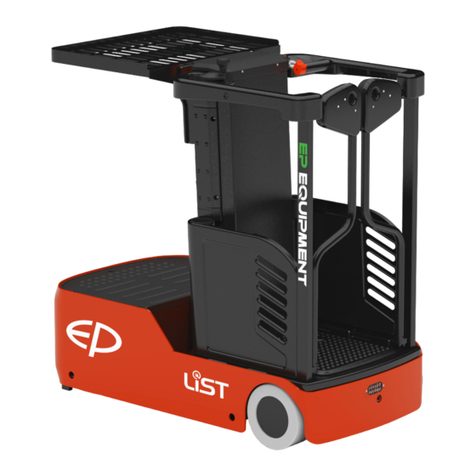
EP Equipment
EP Equipment LIST JX0 User manual
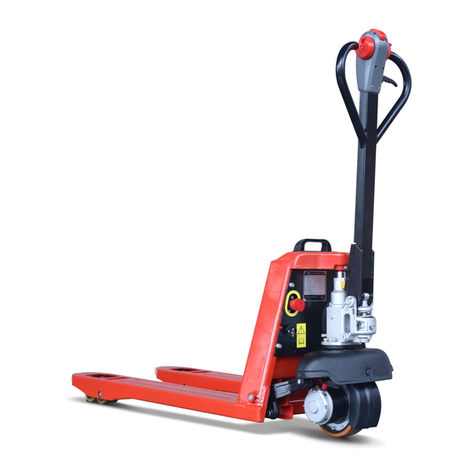
EP Equipment
EP Equipment HPL152 User manual
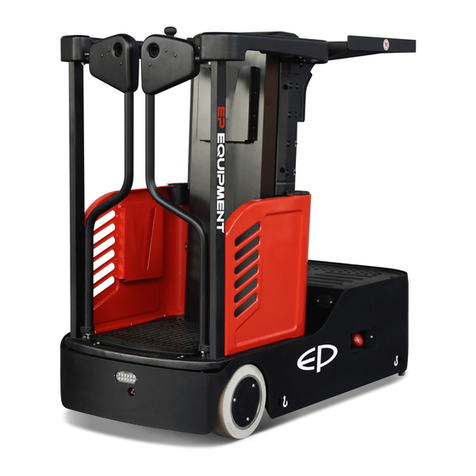
EP Equipment
EP Equipment LIST JX0 User manual

EP Equipment
EP Equipment HPL152 User manual

EP Equipment
EP Equipment ES16-RS User manual
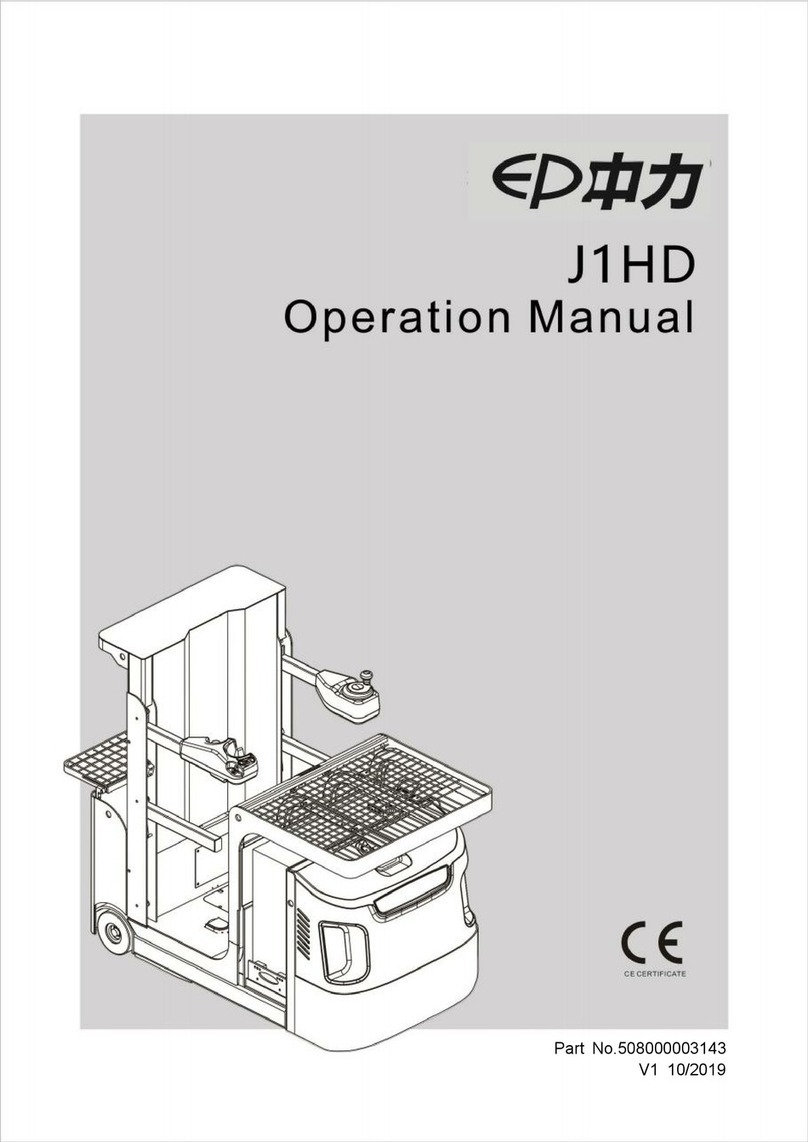
EP Equipment
EP Equipment J1HD User manual

EP Equipment
EP Equipment CQD16 User manual
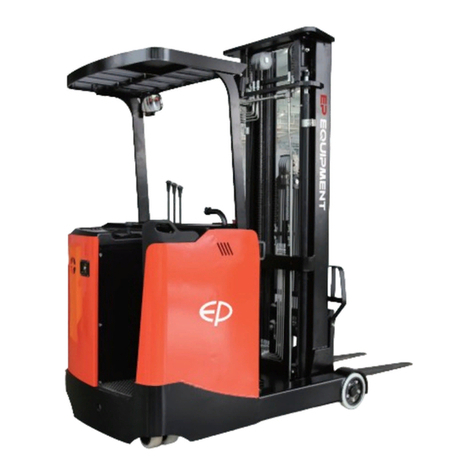
EP Equipment
EP Equipment CQD15S-E User manual
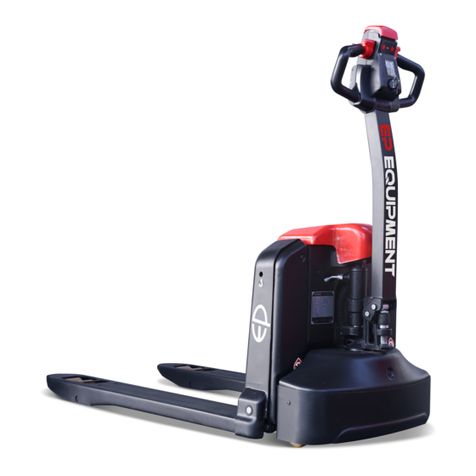
EP Equipment
EP Equipment EPL152 User manual
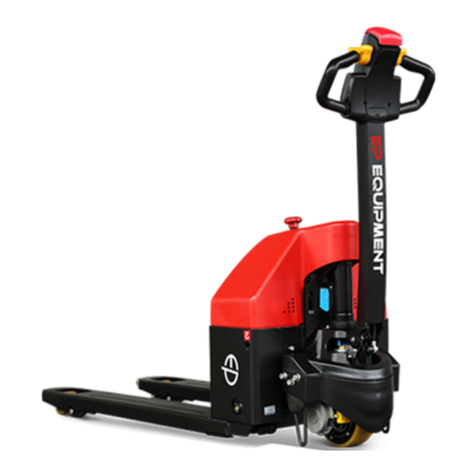
EP Equipment
EP Equipment EPT20-15ET User manual
